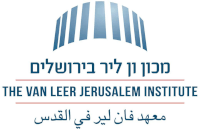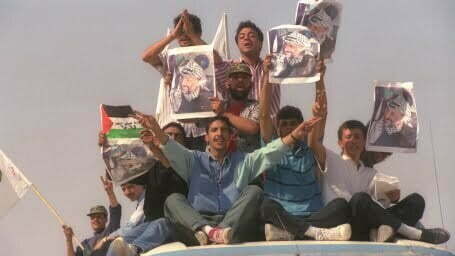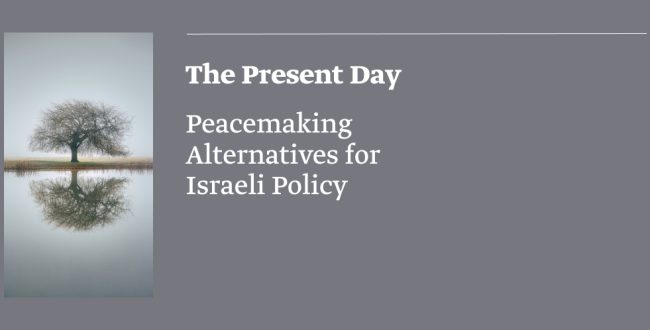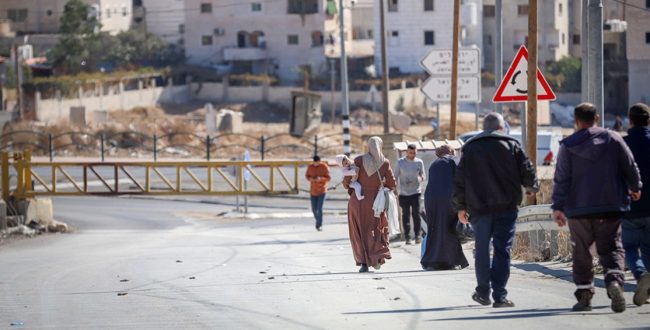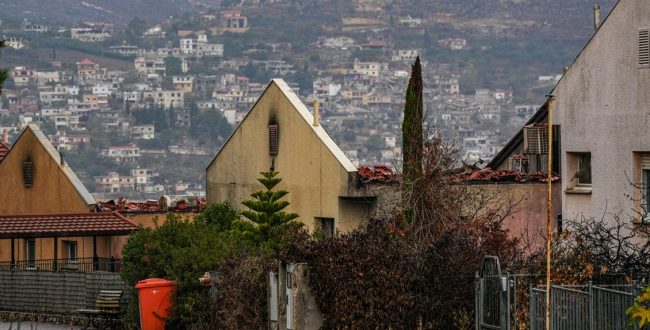In both the Israeli and Palestinian arenas, two recent events seem disconnected but actually represent comparable political processes taking place on both sides. The similar nature of these events elucidates important characteristics of the Israeli-Palestinian system.
The first event was the conclusion of the hunger strike orchestrated by Palestinian political prisoners in Israel after 40 days. The strike was organized by Marwan Barghouti, a Palestinian sentenced to cumulative life imprisonment for his role in initiating the terrorist activities of Tanzim Fatah during the Al-Aqsa Intifada.
Although the strike commenced with vocal fanfare, it was ultimately overshadowed by Trump’s visit to the region, ending meekly and with few tangible outcomes. While one of the strike’s achievements include improved visitation policies for family members, it seems that the prison authorities had the upper hand this time, which has not been the case in past hunger strikes.
Barghouti attempted to recruit Palestinian public support and promote his political standing through the strike. He sought to ultimately present himself as an alternative to Abu Mazen’s leadership and the current political situation based on intensive cooperation with Israel. It is likely that the strike’s minimal effects will harm his calculated attempt to challenge the current leadership.
The second event was a rally organized by the Israeli Left this weekend in Tel Aviv’s Rabin Square with the theme of “Two States – One Hope.” The demonstration sought to leverage what some activists described as a “political opportunity” created by President Trump’s visit to the Middle East. As with the hunger strike, this event aroused minimal response; a mere 15,000 people were present at what was supposed to be a mass rally to express the urgency and passion of the peace camp, ultimately giving the impression that this political issue is of no interest to the Israeli public.
These two events similarly address the problematic makeup of Israeli-Palestinian relations, but also reflect the stagnant nature Israeli-Palestinian communication system over the past decade. This system is based on two elements that have remained consistent: the erosion of the idea of two states and its replacement by informal political arrangements that preserve the existing situation.
While paramount political objectives of both sides still stand at the center of negotiations – full independence from the Palestinian side and an end to the occupation of annexed territories from the Israeli side – both sides are satisfied with modest intermediate goals that enable mutual coexistence under conditions of economic and political stability.
The second element is the respective leadership camps in Jerusalem and Ramallah consistent promotion of the belief that quiet understandings and covert relationships are crucial to maintaining economic and security cooperation. This sort of relationship is portrayed as transforming the Israeli-Palestinian space into an enclave of stability in an unstable region characterized by inherent upheavals and instability.
In this context, both the Palestinian hunger strike and the Israeli rally by the Left can be understood as attempts from within both societies to erode the existing arrangement and disrupt the political cooperation between the leaderships on both sides, which has lasted for more than a decade in an astonishing manner.
The proposed alternative agenda symbolizes political and ideological opposition. On the Palestinian side, the prisoners’ strike did not focus exclusively on prisoner (or human) rights, but rather on a collection of forces perpetuating the existing arrangement, led by the Palestinian Authority. It is important to note that Palestinian-Israeli cooperation and negotiation marginalizes the affairs of Palestinian prisoners; this sort of official cooperation has pushed the Occupation out of focus. On the Israeli side, the demonstration represents an act of resistance against the deliberate erosion of the two-state solution.
The relative failure of these two events shows that the system of Israel-Palestinian relations is currently stable, and that the strength of the political and ideological power structures on both sides is great, creating a sturdy barrier against change.
One can derive two conclusions from this reality: the first (and perhaps the more naïve of the two), in the spirit of Diana Boto’s recent article, is the need for continuous attempts to undermine the existing system in order to ultimately revive negotiations.
The second (more sober) conclusion is the need to reevaluate expectations of the actors involved in the political process. They must renew and restructure current patterns of political thought in a way consistent not with their desires and dreams, but with possibilities for tangible change, given the current strength and stability of the Israeli-Palestinian political relationship.
Fifty years after the brief war that altered the face of the Middle East in 1967, Israelis and Palestinians who aspire to alter the status quo require creativity and open-mindedness, even if it involves a painful separation from past perceptions.
Translator: Michelle Bubis


